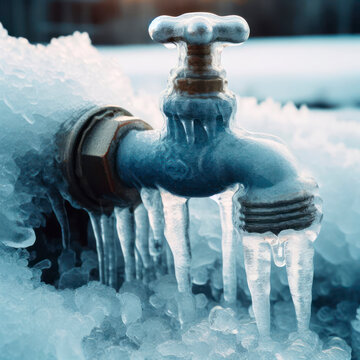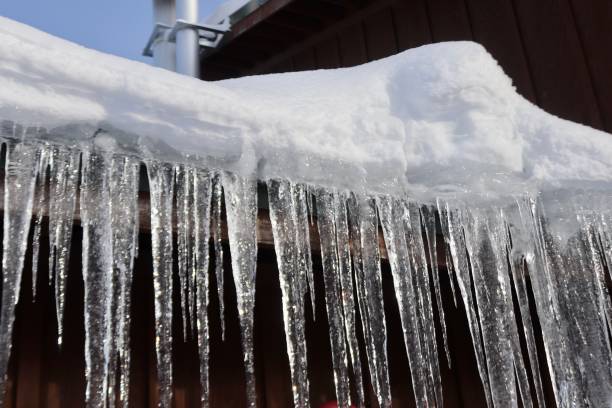Just about everyone may have their own thinking with regards to Winter Plumbing Precautions: Preventing Frozen Pipes.

Cold weather can damage your pipes, particularly by freezing pipelines. Right here's how to stop it from occurring and what to do if it does.
Introduction
As temperatures drop, the threat of icy pipes rises, potentially leading to expensive repair services and water damage. Comprehending exactly how to avoid frozen pipes is vital for property owners in cool climates.
Prevention Tips
Insulating susceptible pipelines
Wrap pipes in insulation sleeves or use warm tape to shield them from freezing temperature levels. Focus on pipelines in unheated or external locations of the home.
Heating techniques
Maintain interior rooms adequately warmed, particularly locations with plumbing. Open up cupboard doors to allow cozy air to distribute around pipes under sinks.
How to recognize frozen pipelines
Look for reduced water flow from taps, unusual smells or sounds from pipelines, and noticeable frost on revealed pipelines.
Long-Term Solutions
Architectural modifications
Take into consideration rerouting pipelines far from exterior wall surfaces or unheated areas. Add additional insulation to attic rooms, basements, and crawl spaces.
Upgrading insulation
Purchase high-grade insulation for pipes, attic rooms, and wall surfaces. Correct insulation aids preserve regular temperatures and lowers the danger of icy pipes.
Protecting Exterior Plumbing
Yard hoses and outside taps
Detach and drain pipes garden pipes prior to winter. Set up frost-proof spigots or cover outside faucets with shielded caps.
Comprehending Frozen Pipes
What causes pipelines to ice up?
Pipelines ice up when revealed to temperatures listed below 32 ° F (0 ° C) for extended periods. As water inside the pipes freezes, it broadens, taxing the pipe wall surfaces and possibly creating them to break.
Threats and damages
Frozen pipelines can lead to water disruptions, building damage, and costly fixings. Burst pipelines can flood homes and trigger considerable structural damage.
Signs of Frozen Pipes
Determining icy pipes early can prevent them from breaking.
What to Do If Your Pipelines Freeze
Immediate activities to take
If you presume frozen pipelines, maintain taps open to alleviate pressure as the ice thaws. Use a hairdryer or towels soaked in hot water to thaw pipes slowly.
Final thought
Protecting against icy pipes calls for proactive steps and fast actions. By comprehending the causes, indications, and safety nets, property owners can secure their pipes during cold weather.
5 Ways to Prevent Frozen Pipes
Drain Outdoor Faucets and Disconnect Hoses
First, close the shut-off valve that controls the flow of water in the pipe to your outdoor faucet. Then, head outside to disconnect and drain your hose and open the outdoor faucet to allow the water to completely drain out of the line. Turn off the faucet when done. Finally, head back to the shut-off valve and drain the remaining water inside the pipe into a bucket or container. Additionally, if you have a home irrigation system, you should consider hiring an expert to clear the system of water each year.
Insulate Pipes
One of the best and most cost-effective methods for preventing frozen water pipes is to wrap your pipes with insulation. This is especially important for areas in your home that aren’t exposed to heat, such as an attic. We suggest using foam sleeves, which can typically be found at your local hardware store.
Keep Heat Running at 65
Your pipes are located inside your walls, and the temperature there is much colder than the rest of the house. To prevent your pipes from freezing, The Insurance Information Institute suggests that you keep your home heated to at least 65 degrees, even when traveling. You may want to invest in smart devices that can keep an eye on the temperature in your home while you’re away.
Leave Water Dripping
Moving water — even a small trickle — can prevent ice from forming inside your pipes. When freezing temps are imminent, start a drip of water from all faucets that serve exposed pipes. Leaving a few faucets running will also help relieve pressure inside the pipes and help prevent a rupture if the water inside freezes.
Open Cupboard Doors
Warm your kitchen and bathroom pipes by opening cupboards and vanities. You should also leave your interior doors ajar to help warm air circulate evenly throughout your home.

I hope you enjoyed our topic on How to Prevent Your Pipes From Freezing. Thanks so much for finding the time to read our piece. Are you aware of somebody who is intrigued by the niche? Please feel free to share it. Thanks for being here. Come back soon.
View More
Comments on “Tips to Prevent Frozen Pipes in Cold Weather: Pro Guidance”